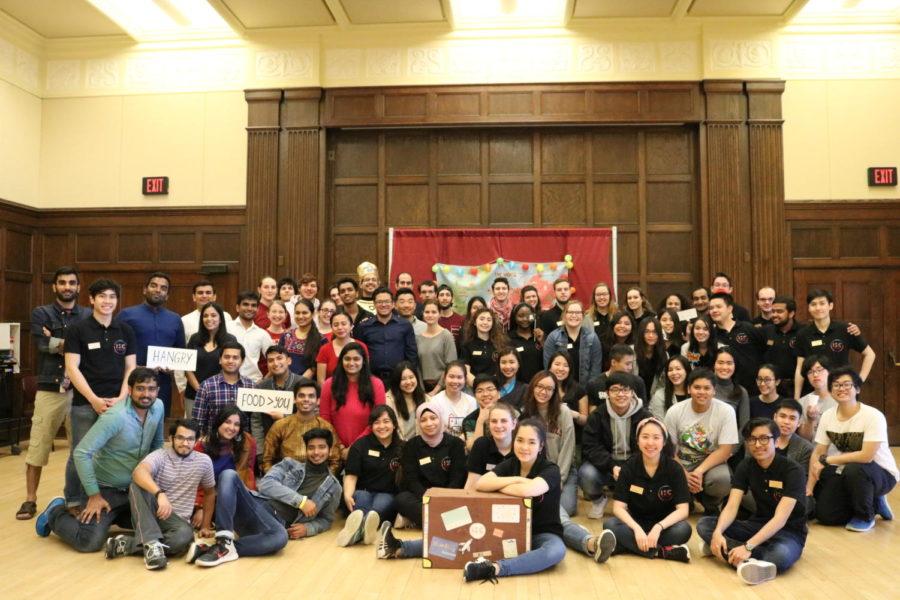Westberg: International Student Council brings culture to campus
IFF group pic .JPG
April 17, 2019
This will be the first part of a two-part series. Part two will be interviews with international students’ artwork pertaining to their culture.
Iowa State University prides itself on both our diversity in education options and culture. Around 10.5 percent of all enrolled students at Iowa State are international students. International students bring pieces of their culture with them to Iowa State, making all of our lives richer. While international students make up a good portion of our campus, many non-international students know little to nothing about the culture that surrounds them every day. Efforts to spread the word on just how you can get involved in the International Student Council (ISC) and learn about different cultures have been made this week, with the ISC putting on the International Food Fair as well as holding the student-facilitated lecture, Countries of Conflict.
While covering some of the events that the ISC put on this week at Iowa State, I also got to meet and speak to many different members of ISC. I had the privilege of meeting with Louise Gardner, who is an exchange student from England. When asked what her favorite thing about being on the International Student Council was, she said, “I think it’s important to mention that within the committee we have extreme diversity with students from all over the globe. I’m actually an exchange student from England; we also have American students, Malaysian students, Indian Students and students from countries such as Denmark, Palestine, Nigeria, Libya, Jordan and many more. Being on the council I’ve learned so much about so many different countries that I don’t think I would have learned otherwise.”
The organization’s goals are to spread diversity and awareness of different cultures on campus. The ISC is a student-based organization of around 40 students that are broken up into different committees. Some of the committees include the International Food Fair, Outreach and Awareness, and Humanitarian Awareness. The organization holds various events all throughout the year, such as food fairs, lectures, diversity and awareness workshops, and much more.
The event that usually sticks out the most for the student body is the International Food Fair. The food fair features some of the most popular foods and drinks from the variety of different countries represented at Iowa State. Although not all of the cultures that we have at our university were represented, 13 different countries were featured at this year’s International Food Fair.
Anyone from the community can come to this event and buy tickets to sample a variety of delicious foods from all over the globe. This event also features different traditions that some cultures have. This year, there were many different performances by the countries represented at the fair. These were mostly traditional dances performed in times of celebration or in social settings.
The atmosphere of the food fair is always warm and inviting for anyone who may be interested in tasting and experiencing a little piece of the countries represented. While the food fair serves to be a great way to know more about some of the different cultures in our communities, food is simply only scratching the surface, which is why the Humanitarian Awareness Committee decided to host the lecture, Countries of Conflict.
The lecture was presented by different students representing each country to speak on behalf of a small portion of their history and address the crises the countries are facing. The lecture focused on some of the conflicts and civil wars that have occurred in a few countries in the Middle East. The countries that were spoken about were Lybia, Yemen, Rohingya, the Gaza Strip and Sudan. Each country or region presented a powerpoint sharing the crises their nation is facing and what people could do to assist those affected.
Countries of Conflict was a very informative and powerful lecture, sharing a lot of information that American news does not typically cover. During this lecture, some students also created artwork to bring light and attention to some very urgent matters happening in their country. I got the chance to interview some of the artists who created pieces. My original plan was to make this coverage over the ISC and to show it all this week; however, after engaging in a lot of thought-provoking and important conversations with the student artist, I have decided to make my coverage of ISC a two-part series.

















